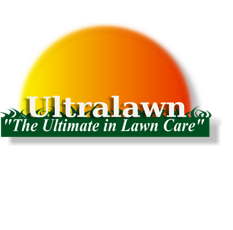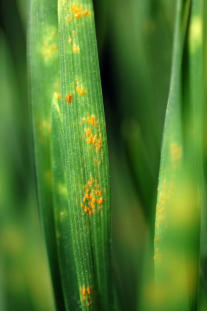
Rust



Ultralawn Incorporated
1055 East 260th Street
Euclid, OH 44132
216.731.7756
440.951.3738
Office hours Monday-Friday 9-3 call today with any questions

Symptoms: Rust fungus is a production of reddish or orange spores that give
the fungus its name. If only a small amount of infection has occurred, the rust
spores will only be seen by close observation. In severe cases, there may be
enough spores present to leave a reddish, powdery dust on mowers, pants and
shoes. The turf grass itself may not look particularly diseased until after the
infection is well developed. Because spore production does not occur until one
to two weeks after infection, rust infected leaf blades are usually mowed away
before rust spores can be produced. Rust is most common on Kentucky
bluegrass and perennial ryegrass, and occurs mostly in late summer and early
fall.
Disease Cycle: The disease cycle on lawns is usually limited to the rust-colored
spore stage, which rarely survives Northeast Ohio winters. As a result, spores
that are blown up from warmer southern areas initiate most rust infections.
Rust cannot grow without a living host plant. Infection only occurs when water
is on the leaf surface and can occur at most normal summer temperatures.
There is usually not enough time for spores to be produced on lawns that are
mowed regularly, so epidemics are not usually severe.
Cultural Management: The most important way to avoid rust infection on lawns is to keep the turf grass
growing vigorously, so that it will be mowed before spores can be produced. Balanced fertilizer applications,
aeration to relieve soil compaction, thatch removal, and proper watering are among the important factors
that will optimize turf grass growth.
Chemical Management: Fungicides are not necessary for rust. Typically a light dose of fertilizer will help the
disease grow out and run its course; however, a fungicide application will help aid in a quicker recovery.

Oranges spores of Rust fungus
attached to grass blades.


















